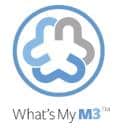Do a Google search for the words “learning styles” and you will find a large number of websites claiming they can identify your preferred learning style in a matter of minutes. Are you a verbal learner? Are you a auditory learner? Are you a kinesthetic learner? Supposedly, those with expertise in the VAK (visual, auditory, kinesthetic) classification system can answer those questions; they can provide a diagnosis regarding your best learning style.
The VAK system is one of many that claims to be able to identify learning style. In one review researchers identified over 70 different learning style (LS) classification systems (1). The definition of learning styles vary, but most in the education field seem to agree that at the very least it involves identifying an individual’s preferred style of learning and matching instruction with that style.
The concept of Learning Styles is attractive to students, parents and educators. Obviously, people are unique, they learn at different rates and prefer different type of experiences. As an extension, Learning Styles makes good sense. Learning Styles allow students to self-test and determine how they best learn. No-one likes to think they have learning difficulties. It is much more comfortable to believe the material was hard to learn because the teaching style didn’t match one’s learning preference, rather than to think it was difficult because the appropriate learning strategies were not used. Parents like the idea that their child is receiving an education specific to their personal learning style. Parents of children that don’t learn well may find it at least slightly consoling that their child’s learning problems may be due to improper instruction, rather than a problem specific to the child.A survey administered by Dekker and colleagues showed that 93% of UK schoolteachers believed that individuals learn better when they are instructed according to their preferred learning style (2). A study conducted using a sample of higher education faculty (in the USA) found that 64% of the study participants answered yes to the statement “does teaching to a student’s learning style enhance learning” (3). A 2008 search of the Educational Resources Information Center (ERIC) found almost 2000 journal articles, approximately 900 conference presentations, and 700 books or book chapters on LS (4). With such a wide spread belief in the LS concept there must be strong evidence to support it? Less than 25% of the entries from the 2008 ERIC database search were peer-reviewed articles.Coffield and colleagues assembled a large database of LS relevant information (1). The database consisted of books, journal articles, theses, magazine articles, websites, conference papers, and unpublished literature. A small portion of the information was from peer-reviewed journals, and an even smaller amount was well controlled studies.
Massa and Mayer conducted a set of experiments to test the attribute-treatment interaction (ATI) hypothesis (5). The ATI hypothesis predicts that visualizers will perform best on tests when they receive visual rather than verbal methods of instruction, and verbalizers will perform best on tests when they receive verbal rather than visual methods of instruction. The results of the study did not support the hypothesis. “Overall, our results do not provide a convincing rationale for customizing different on-line instruction programs for visualizers and verbalizers.”
Kratzig and Arbuthnott tested whether learning style preference correlated with memory in each of the 3 sensory modalities (visual, auditory, kinesthetic)(6). The results indicate test performance did not correlate with learning style preference. The researchers concluded that their results challenge the claim that individuals learn best when instructed according to their preferred sensory modality.
There is no strong evidence to support LS. However, this shouldn’t discourage educators from striving to improve teaching methods. Teaching beginners in a specific area might require different strategies than teaching those with high levels of knowledge. Different teaching strategies might be required for teaching different things; that is, strategies may depend on context.
There is a large body of research on strategies to maximize learning. Educators and students are advised to review and use information from that line of research, rather than spending excessive time trying to identify their illusive learning style.
References
- Coffield, F., Moseley, D., Hall, E., & Ecclestone, K. (2004). Learning Styles and Pedagogy in Post 16 Learning: A Systematic and Critical Review. London: Learning and Skills Research Centre.
- Dekker, S., Lee, N.C., Howard-Jones, P., & Jolles, J. (2012). Neuromyths in education: prevalence and predictors of misconceptions among teachers. Frontiers in Psychology, 3, 429.
- Dandy, K., & Bendersky, K. (2014). Student and faculty beliefs about learning in higher education: implications for teaching. International Journal of Teaching and Learning in Higher Education, 26, 358-380.
- Lilienfeld, S.O., Lynn, S.J., Ruscio, J., & Beyerstein, B.L. (2010). 50 Great Myths Of Popular Psychology: Shattering Widespread Misconceptions about Human Behavior. Malden, MA: Wiley-Blackwell.
- Massa, L.J., & Mayer, R.E. (2006). Testing the ATI hypothesis: Should multimedia instruction accommodate verbalizer-visualizer cognitive style. Learning and Individual Differences, 16, 321-335.
- Kratzig, G.P., & Arbuthnott, K.D. (2006). Perceptual learning style and learning proficiency: A test of the hypothesis. Journal of Educational Psychology, 98(1), 238-246.
What’s Your Learning Style? | PsychCentral











